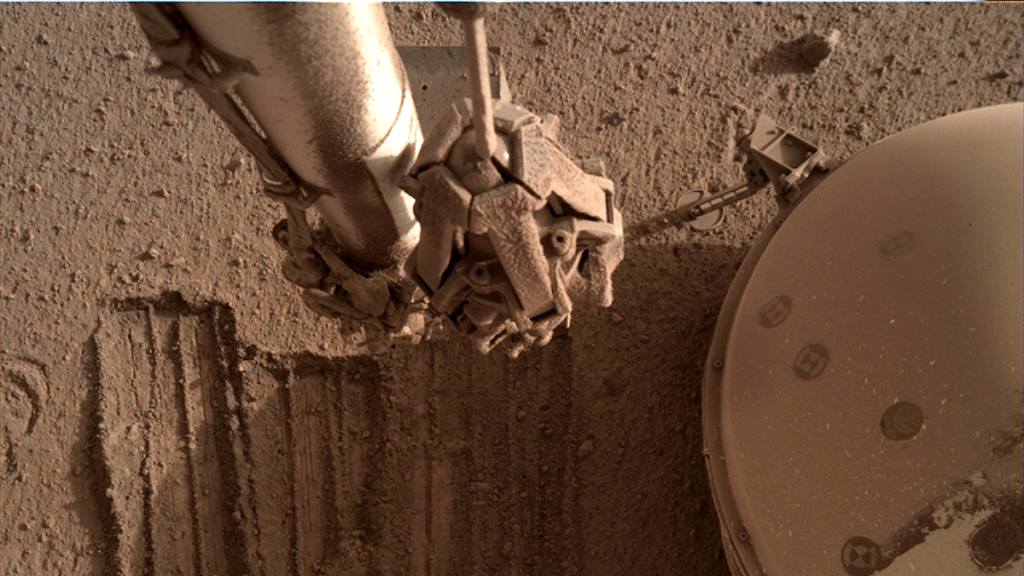The chances of finding Martian life appear poor at in the vicinity of NASA’s InSight lander.
The InSight mission uncovered little or no sign of water or water ice in the nearly 1,000 feet (300 meters) below the lander, a new study shows. The subsurface around the landing zone — an equatorial site chosen especially for its flat terrain and good marsquake potential — appears loose and porous, with few ice grains in between gaps in the crust, researchers said.
“These findings don’t preclude that there could be grains of ice or small balls of ice that are not cementing other minerals together,” said study lead author and geophysicist Vashan Wright, of the Scripps Institution of Oceanography at the University of California San Diego.
“The question is, How likely is ice to be present in that form?” Wright said in a statement. (opens in new tab) Another possible indication of water is rocks cemented together below the landing area, but InSight hasn’t found evidence of widespread cemented sediments, the statement added.
Related: NASA’s InSight lander detects the biggest quake on Mars yet
InSight is located on Elysium Planitia, upon which the mission alighted in 2018 to look for marsquakes, or vibrations caused by interior activity or meteorites crashing into the Martian surface.
The equatorial region where InSight is working, in theory, should be able to host subsurface water, as conditions are cold enough even there for water to freeze. But the new finding is challenging scientists’ assumptions about possible ice or liquid water beneath the subsurface near InSight, whose job is to probe beneath the surface.
While images from the surface have suggested there might be sedimentary rock and lava flows beneath InSight, researchers’ models have uncertainties about porosity and mineral content. InSight is helping to fill in some of those gaps, and its new data suggests that “uncemented material” largely fills in the region blow the lander. That suggests little water is present, although more data needs to be collected.
It’s unclear how representative the InSight data is of the Martian subsurface in general, but more information may come courtesy of future missions. NASA is considering a Mars Life Explorer that would drill 6 feet (2 meters) below the surface to search for possible habitable conditions. Additionally, a proposed Mars Ice Mapper Mission could search for possible water reservoirs for human missions.
A study (opens in new tab) based on the research was published Tuesday (Aug. 9) in Geophysical Research Letters.
Follow Elizabeth Howell on Twitter @howellspace. Follow us on Twitter @Spacedotcom (opens in new tab) and on Facebook (opens in new tab).

